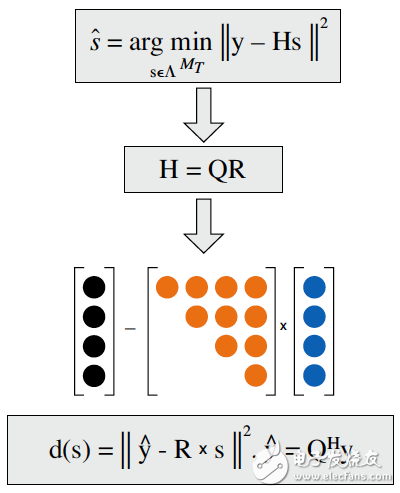The best hard decision detection method for MIMO wireless systems is the Maximum Likelihood (ML) detector. ML detection is very popular because of its outstanding bit error rate (BER) performance. However, the complexity of direct implementation increases exponentially with increasing antenna and modulation schemes, allowing ASICs or FPGAs to be used only for low-density modulation schemes using a few antennas.
WiMAX's broadband Internet access is as significant as mobile-to-voice communications. It can replace DSL and cable services to provide Internet access anytime, anywhere. Just turn on your computer and connect to the nearest WiMAX antenna to get around the world.
One of the biggest challenges for broadband Internet access is mobility, which is what the latest WiMAX standards have to address. IEEE 802.16e-2005 introduces the use of multiple antennas in transmission and reception. The MIMO concept, also known as multi-input and multiple-output, is a key feature of mobile WiMAX.
Space Division Multiplexing (SDM) MIMO processing can significantly increase spectral efficiency, which in turn significantly increases the capacity of wireless communication systems. As a means of greatly improving the capacity and connection reliability of wireless systems, the space division multiplexing MIMO communication system has recently attracted widespread attention.
The best hard decision detection method for MIMO wireless systems is the Maximum Likelihood (ML) detector. ML detection is very popular because of its outstanding bit error rate (BER) performance. However, the complexity of direct implementation increases exponentially with increasing antenna and modulation schemes, allowing ASICs or FPGAs to be used only for low-density modulation schemes using a few antennas.
In MIMO detection, an excellent method of maintaining the BER performance comparable to the best ML detection and greatly reducing the computational complexity is the non-spherical detection method. This approach not only reduces the detection complexity of SDM and space division multiple access systems, but also maintains BER performance comparable to optimal ML detection. There are several ways to implement a spherical detector, each with multiple different algorithms, so designers can find the best balance between performance metrics such as wireless channel throughput, BER, and implementation complexity.
Although algorithms (such as K-best or depth-first search) and hardware architectures have a significant impact on the final BER performance of MIMO detectors, channel matrix pre-processing typically performed before sphere detection will also be final for MIMO detectors. BER performance has a huge impact. The channel matrix preprocessing can be simple and simple. For example, according to the variance calculation result (variancecomputaTIon) of the channel matrix, the priority of processing the spatial division multiplexed data stream can be calculated, or a very complicated matrix factorization method can be used to determine the more. Ideal (in BER) data stream processing prioritization.
Signum Concepts, a San Diego-based communications systems development company, has been working with Xilinx and Rice University to design MIMO detection for space division multiplexing MIMO for 802.16e broadband wireless systems using FPGAs. Device. The processor uses a channel matrix preprocessor to implement a continuous interference cancellation processing technique similar to that used in Bell Labs' layered space-time (BLAST) architecture, and finally achieves near maximum likelihood performance.
System considerations
Ideally, the inspection process requires ML solution calculations for all possible combinations of symbol vectors. Spherical detectors are designed to reduce computational complexity by using simple arithmetic operations while still maintaining the numerical integrity of the final result. The first step in our approach is to decompose the complex numerical channel matrix into an expression with only real numbers. This operation increases the matrix dimension but simplifies the computation of the processing matrix elements. A second aspect of reducing computational complexity is the reduction of optional symbols for analysis and processing of detection protocols. Among them, QR decomposition of the channel matrix is ​​a crucial step.

Figure 1. Partial Euclidean distance metric equation for MIMO detection of spherical detectors
Figure 1 shows how to perform a mathematical transformation to derive the final expression for the computational partial Euclidean distance metric. The Euclidean distance metric is the basis of the spherical detection process. R represents a triangular matrix for iterative methods of processing alternative symbols starting with matrix elements rM,M. Where M represents the dimension of the channel matrix expressed in real numbers. The solution defines a traversal tree structure through M iterations, where each layer i of the tree corresponds to the processing symbol of the ith antenna.
There are several alternative ways to implement tree traversal. In our implementation, the breadth-first search method is used because it uses a popular feedforward structure and therefore has hardware-friendly features. At each level, the implementation selects only K surviving nodes with the smallest distance to calculate the expansion.
The order in which the spherical detector processes the antenna has a significant impact on BER performance. Therefore, before the spherical detection, our design uses a channel reordering technique similar to V-BLAST technology.
The method calculates the row norm of the pseudo inverse matrix of the channel matrix by multiple iterations, and then determines the optimal column detection order of the channel matrix. Depending on the number of iterations, the method can choose the row with the largest or smallest norm. The inverse matrix row with the smallest Euclidean norm indicates that the antenna has the strongest influence, while the row with the largest Euclidean norm indicates that the antenna has the weakest effect. This novel approach first deals with the weakest data stream, and then iteratively processes the data streams from high to low.
Qunsuo provide Thermal Printer and Dot Matrix Printer, including desktop and portable printers. The printer size includes 58mm, 76mm and 80mm.
All of our printers support connect with mobile via bluetooth serial port. What's more, in order to meet customers various requirements, we also provide Printer OEM/ODM service.
Every of our printers are under quality control strictly, from material incoming to finished goods complete.
Welcome to contact us for more information!
Printer OEM/ODM
Oem/Odm Printer,Best Photo Printer,Best Laser Printer,Mini Printer
Shenzhen Qunsuo Technology Co., Ltd , https://www.qsprinter.com